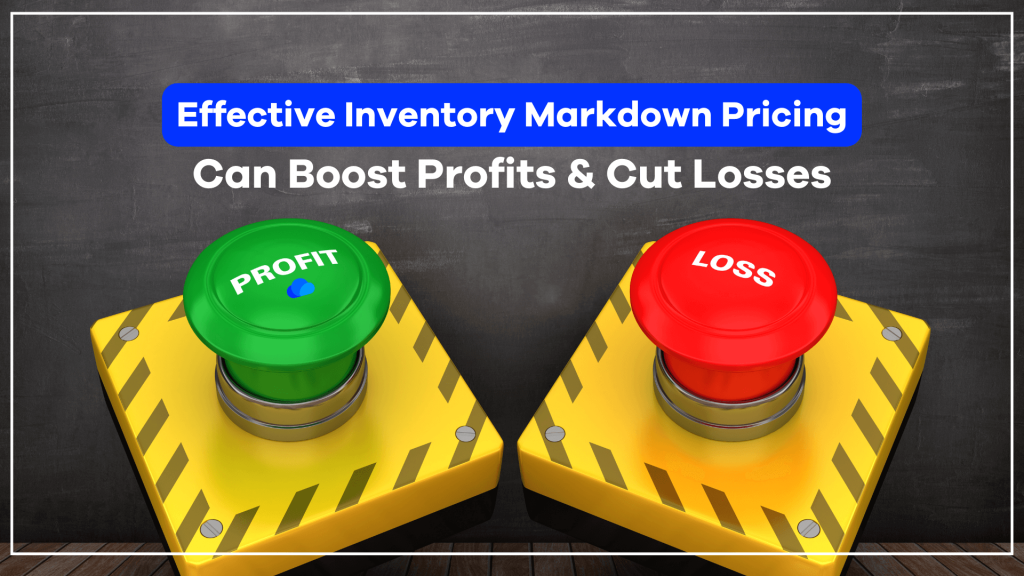
A markdown is any reduction in the price of a product. If applied correctly, inventory markdown pricing strategies can increase sales and profits. While the idea of lower prices driving higher profits may initially seem counterintuitive, the allure of lower prices is a proven way to increase sales and bring customers to your products and brand.
The goal is to compensate for markdown price reductions with higher order volume by boosting conversion numbers and selling inventory faster. Furthermore, attracting new customers creates the opportunity for repeat business in the future.
The Descartes Sellercloud omnichannel growth platform makes it easy to both set and adjust the pricing of all the products in your catalog across all of the places where you sell from one convenient interface.
This combination of control and convenience means that you can spend less time manually marking down product prices across individual channels and more time focusing on scaling your ecommerce business to the next level.
All that being said, it is crucial to remember that markdowns can be a profitable strategy only if done for the right reasons and in the right ways.
The Best Reasons to Markdown Your Inventory
There are many valid approaches to using markdowns as a profit-boosting strategy in ecommerce. Some focus on generating revenue, others aim to reduce costs, and still more seek to do both simultaneously. Some of the most reliable ways to use markdowns to improve your bottom line include:
Use Markdowns to Reduce Your Carrying Costs
Warehousing, 3PLs, and marketplace-based storage fees can be expensive. In most cases, the more space your inventory takes up, the more you pay to store it. This can be problematic if your inventory sell-through rate is low.
At some point, the cost-benefit of storing unsold inventory versus selling that inventory off at a markdown tilts in favor of getting merchandise out the door. Even slim profit margins may prove more profitable than continuing to pay carrying costs indefinitely.
Use Markdowns to Pave the Way for New Products
Every SKU has a lifecycle. As the end of that journey approaches, you must begin clearing out older, less desirable products to make room for new ones. Markdown pricing can help you liquidate old stock and eke out whatever profit and customer attention you can from sunsetting SKUs.
Use Markdowns to Win the Buy Box and Bring New Customers to Your Brand
Sometimes, the long-term value of exposure is worth more than a short-term reduction of your profit margins. Carefully timed markdowns that make your product the most affordable on a particular marketplace can expose your products to new buyers.
What’s more, if you have a plan for how to capitalize on these new customers with a remarketing plan, you can reap the benefits of a temporary markdown long after the price has returned to normal.
However, of the three reasons listed here, this is the one that can get you into trouble if used incorrectly. Relentless pursuit of the Buy Box can drag on the value of your products and brand. Moreover, the odds of losing out to competitors that over-rely on a lowest-price repricing strategy could make this a losing battle before it even begins.
Speaking of which…
The Worst Reasons to Markdown Your Inventory
For all their potential value to your ecommerce business, markdowns can also create problems. Reducing prices for the wrong reasons can create short—and long-term issues for your online retail success. Some markdown mistakes are more egregious than others:
Thinking Markdowns Are the Key to Competing with the Retail Giants Is a Major Mistake
There are ways for smaller ecommerce businesses to gain a share of the online retail market, but competing on price is not typically one of them. Amazon, Walmart, and other marketplaces and retailers like them have access to volume purchasing and logistical capabilities far beyond most ecommerce businesses.
This, combined with their incredibly high sales volumes, allows these industry leaders to generate profits on margins far thinner than those of their smaller competitors. Constantly marking your prices to the lowest levels will not work for you, as it does for the heaviest hitters.
Marking down Prices to Simply Increase Orders
This is unlikely to boost your bottom line. Abusing markdowns can depreciate the value of your products and your brand. If customers come to expect regular sales and discounts, you will find it harder to sell products at full price and, in turn, justify their true value.
Increased order volume can quickly become a vanity metric if you don’t also consider the profitability impacts of your increased sell-through rate. While you may be bringing in new customers, you will be unable to get the maximum value out of their repeat business if they never purchase any of your products at full retail prices.
Using Markdowns to Compensate for Purchasing Too Much Inventory Is a Costly Long-Term Strategy
It essentially amounts to putting a bandage on a much larger problem. Finding the sweet spot for how much inventory to keep on hand is a critical calculation for any retail business.
It is also something that needs to be consistently re-evaluated. If your business’s plan involves ordering inventory so far beyond your customers’ demand that you must regularly rely on markdowns to move it, you are setting your business up for potential disaster.
Descartes Sellercloud Can Help You Avoid the Worst Markdown Pitfalls
The difference between effective and ineffective markdown strategies can be small, but the impacts can be significant. One of the many benefits of a unified ecommerce growth platform like Descartes Sellercloud is the ability to identify and execute the right parameters to maximize a markdown.
Grow Your First-Party Sales
Third-party marketplaces are excellent venues to get an ecommerce brand off the ground. Tapping into these established customer bases provides strong launching points to establish and scale a business.
That said, transforming your third-party sales into a first-party business opens up new growth opportunities. For example, markdowns can help build first-party sales in a way that third-party marketplace terms of service (specifically their strict communication limitations) make impossible.
Descartes Sellercloud empowers sellers with the tools and data they need to achieve omnichannel success across first- and third-party channels.
Approach Repricing the Right Way
Descartes Sellercloud makes it easy to adjust product prices across multiple channels simultaneously. It also supports integrations with some of the industry’s best third-party repricers. Rather than marking down your prices by simply undercutting your competitors’ lowest levels, you can make more nuanced decisions based on metrics such as purchasing costs and carrying costs.
Descartes Sellercloud’s various reporting features make these figures available and eliminate the need to ‘go with your gut’ about the ideal markdown prices. Repricing tools take things further and allow you to set automation and pricing thresholds to ensure that you’re never selling products at rates outside your comfort zone.
Order and Carry the Right Amount of Inventory
Descartes Sellercloud’s inventory management features ensure you always know how much inventory you have and where you have it. Predictive purchasing takes things further by issuing notifications or initiating automated purchase orders when stock runs low.
These features eliminate the need to get into a cycle of over-purchasing and marking down your surplus. Instead, you can use actual sales performances to dictate the ideal buffer inventory levels to keep on hand. The result: eliminate backorders and overselling while saving markdowns for more effective uses.
For more on how Descartes Sellercloud’s family of tools and modules can help you create and execute growth-focused ecommerce strategies, contact us directly for a free demo today.




